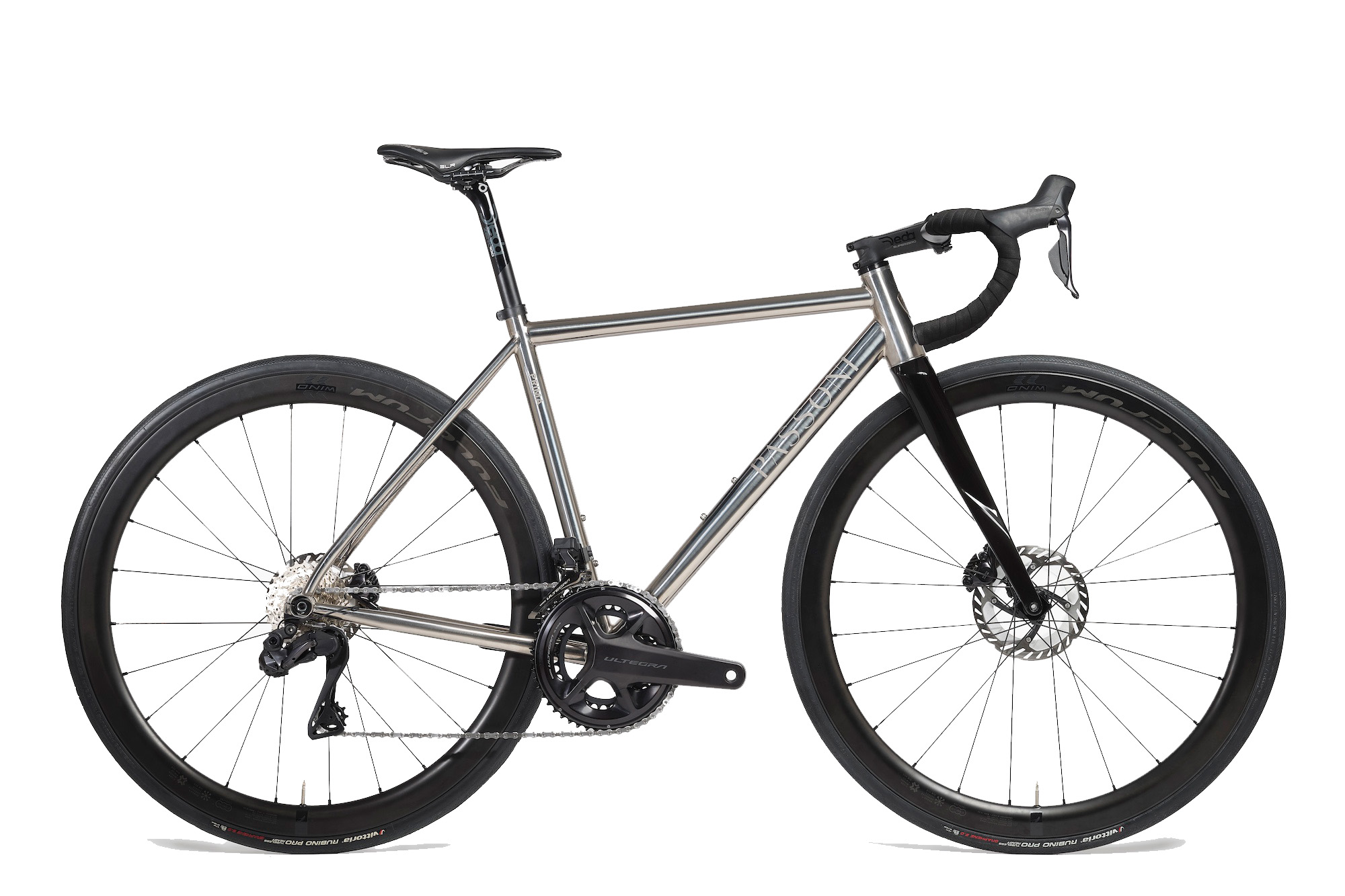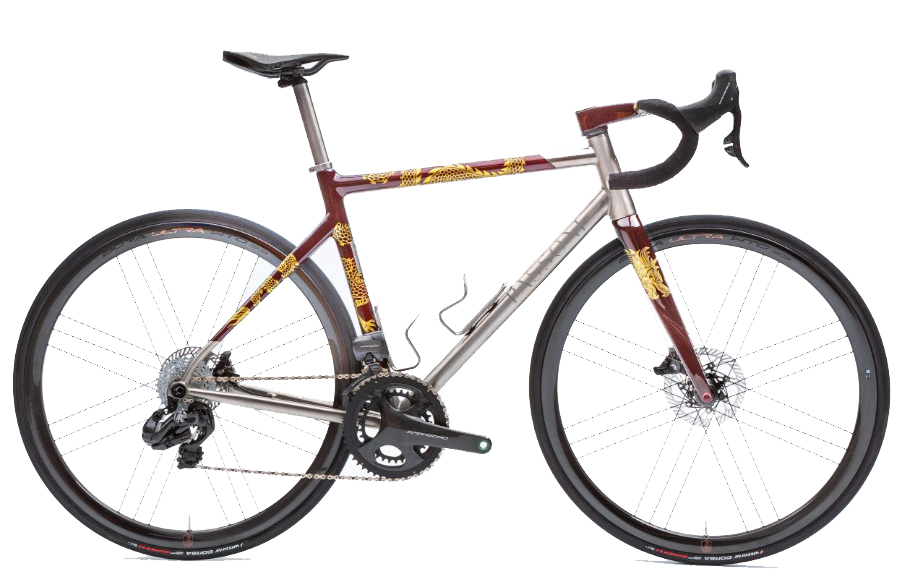The thrill of a custom bicycle is knowing that it's been made to fit you alone. From the way it matches your measurements to tweaks to the geometry to tailor how it handles, each bike is a collaboration between its prospective owner and us. Aiming to demystify some of the terminology involved, below you'll find our concise guide to bicycle geometry.
Discover the manufacturing process behind a bicycle
.
The most talented artisans and the best quality materials are not enough to make the perfect bicycle. A third element is needed; the skills of a mathematician. A bicycle frame isn't just an assemblage of tubes. It's also a collection of carefully calculated numbers. These numbers dictate both how the bicycle fits its rider and how they experience the road beneath them.
.
Part art and part science, when we create a custom bicycle, we're not just constructing a simple object; we're creating a unique formula to solve the question posed by the needs of its owner.
.
Passoni's Matteo Visentini understands how to create harmony through design.
The son of Giro d’Italia winner Roberto Visentini and an avid bicycle collector he’s also a trained architect. It’s a background that makes him well placed to explain how geometry influences every element of the way a bicycle rides.
.
"With a custom frame, we can create the perfect fit and the ideal geometry," explains Matteo.
The size and proportions of the rider will help determine the ratios of the bike. However, elements like the stack and reach of the frame, the length of its chainstays, or the angle of its head and seat tube can all be chosen to create the desired effect when riding.
.
"Of course, even when custom building a bike, there are some rules we have to follow," explains Matteo. "If a client wants a bike with such an aggressive head angle that it won't work for the riding that it's designed for, then we try to convince them that it's not the best choice".
.
Each design Passoni creates draws upon thousands of files containing the details of every frame it's made before. From uncredited racing bikes built for pro teams during the 90s to custom bikes for every conceivable application, the details of each contribute to an evergrowing library of geometry solutions.
___
Adding it all together
Although many things are possible when making a custom bike, Matteo and the team always have a firm idea of what's 'permissibile'.
"Of course, we have some special clients like Italian Champion Filippo Pozzato," says Matteo. "Through racing, he rode a very extreme bike his entire life". Now the bikes Passoni makes for him take into account the geometry he's become used to after hundreds of thousands of kilometres of racing and riding.
In general, though, the team will work with the rider to steer them towards a geometry that fits both their physiology, style and personal preferences.
At the same time, although all its custom bikes can be adjusted, each model Passoni produces suits a particular range of parameters in terms of geometry. "Bikes like our XXTI or Titanio will always be the most aggressive," says Matteo. "At the other end, you have the Cicloprato gravel bike, and in the middle, a kind of perfect balance, bikes like the Classica".
While each can be modified, it doesn't make sense to force it to perform against its essential nature. Therefore, part of the designer's skill is also to steer the rider to the best model before helping tailor it to their exact needs.
"We try to understand the needs of the client," says Matteo. "We might start by measuring their existing bikes. Then we'll put them on a simulator during the fitting and try and discover what they like about them and what isn't working so well".
___
Geometry fundamental
From here, choosing a new model and designing the bike's geometry is a collaboration between Passoni and the client. The key to this is understanding how each element of the frame affects the bike's handling. Below Matteo helps examine five crucial areas in any frame's geometry.
___
Stack and Reach
Stack and reach describe how high and how far forward the top of the head tube is from the bottom bracket. These two distances significantly affect the bike's character and how it fits its rider. "Compared to the old way of doing things, it's straightforward," says Matteo. "You measure the distance between the handlebar and the vertical and horizontal lines that project from the bottom bracket". The larger the stack, the higher the bike's front end, and the more upright the rider is. The reach then dictates how far you stretch forward to meet the handlebars. Previously, people would estimate reach via the length of the top tube. However, as this number isn't fixed to any single point, the modern system based around using the bottom bracket is easier to understand. "It's convenient," says Matteo. "At the same time, it doesn't give you the complete idea of how every element of the frame relates to the next".
___
Wheelbase
The wheelbase is the total distance between the wheel axles. In general, a bike with a shorter wheelbase will be quicker to turn, and a bike with a longer wheelbase will be more stable. The length of the seatstays, the frame's reach, and the fork's rake all contribute to this total. This means a bike's wheelbase is a good indication of its characteristics but not the whole picture.
___
Chainstay length
"Chainstay length has a big impact on the bike," says Matteo. "Back in the day when all bikes used similar components, their length was pretty much fixed". Nowadays, it's still the case that a few millimetres changed in the chainstays can drastically alter how the bike handles. Generally, the shorter they are, the more reactive the bike will be, while shorter chainstays are also less prone to flex, resulting in a more reactive feel. "Take the Titanio Disco. Its seatstays are short because it's intended to be racy," explains Matteo. "On the Classica, which we think is a perfect endurance bike, they're a bit longer". Besides handling, chainstay length also dictates the maximum width of tyre the bike can accommodate. As they grow wider, the chainstays must grow too. This means getting the correct length is a balance between the handling characteristics required and the tyres the rider wants to be fitted to their bike.
___
Head angle
"The head tube angle is crucial," says Matteo. The head angle is the angle of the headtube through which the fork passes. It has a massive effect on handling and is expressed in degrees. A totally vertical head tube with the fork pointed straight down would be 90°. The steeper the head angle, the more quickly the bike will turn. However, a bike with an excessively steep head angle will be hard to control. The head angle of most road bikes tends to be within a degree or so of 73°. Depending on the style of riding and the size of the frame, subtle changes can greatly affect the bike. "It's a common thing people want to adjust," says Matteo. "Many people ask us for a bike that's more aggressive and with a very steep angle. Depending on the circumstances, we might try to convince them that it's not the best decision".
___
Seat angle
Seat tube angle determines where the rider sits above the frame. "Often, you'll see pro riders with their saddle pushed very far forward or very far back," says Matteo. "A nice thing about making a custom frame is every element can be in harmony. This means we want to have the saddle sitting in the middle of its rails". The angle of the seat tube is often connected to the head angle so that the rider remains in the correct position as the saddle height is adjusted. "Seat tube angle also has an effect on comfort," says Matteo. "Imagine a track or time trial bike with a very steep seat angle. It transfers a lot of vibration up to the rider. A more relaxed angle helps increase flex and improve comfort".

 Ready-to-ride
Ready-to-ride Made-to-measure
Made-to-measure Special edition
Special edition